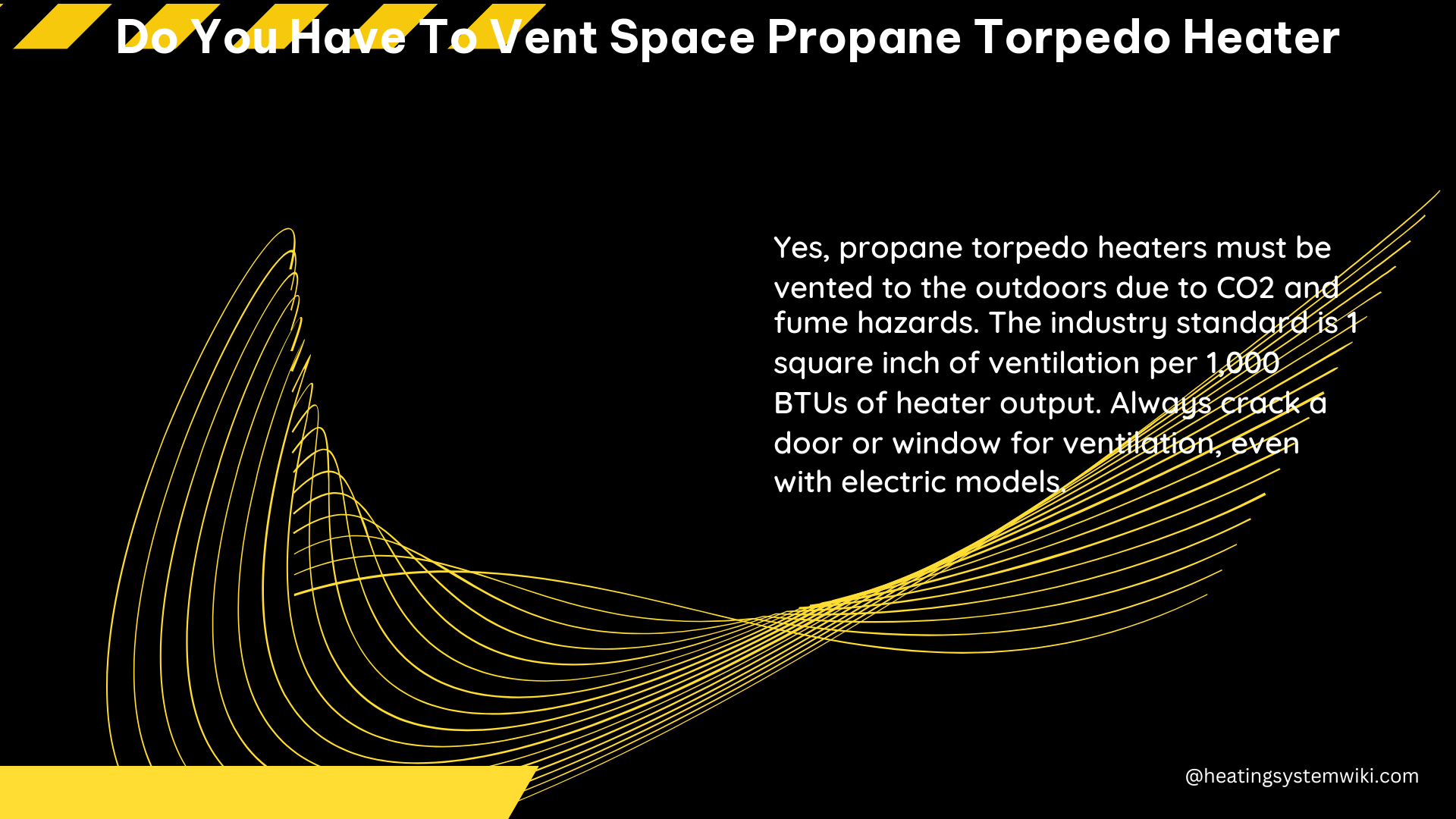When it comes to using a space propane torpedo heater, the question of whether or not to vent the unit is a critical safety concern. These heaters are designed to operate in well-ventilated spaces to prevent the buildup of harmful gases, such as carbon monoxide (CO), which can be fatal if not properly managed.
Understanding Torpedo Heater Specifications
The heat output of a space propane torpedo heater is typically measured in British Thermal Units (BTUs). This measurement is essential when determining the appropriate ventilation requirements for the heater. The industry standard for ventilation is 1 square inch of vent area for every 1,000 BTUs of heater output. This standard ensures adequate air exchange to prevent the accumulation of harmful gases.
For example, a 60,000 BTU torpedo heater would require a minimum of 60 square inches of vent area to meet the industry standard. This can be achieved through a combination of strategically placed vents, windows, or doors to allow for proper air circulation.
Improving Ventilation for Enclosed Spaces

DIY enthusiasts looking to use a space propane torpedo heater in an enclosed space, such as a garage, can implement various ventilation strategies to ensure safe operation. One approach, suggested by a user on The Garage Journal forum, involves fashioning a semi-permanent venting system.
This system involves:
1. Pulling in fresh air through a vent tube
2. Expelling the “dirty” air out through a floor-level vent
3. Using a fan to facilitate the air exchange
This setup can be adapted to fit the specific needs of a garage or other enclosed space, provided that the necessary modifications are made to accommodate the venting system.
Hanging Torpedo Heaters Safely
Another consideration for using a space propane torpedo heater is the placement of the unit. A user on the DIY Home Improvement Forum asked about hanging a torpedo heater from the ceiling to save space and keep it away from children. In this case, it’s crucial to ensure that the heater is hung at a safe height and that there is adequate ventilation around it.
To prevent heat damage to nearby surfaces, such as vinyl siding, it may be necessary to run an exhaust flume or duct to direct the hot air away from the heater’s surroundings. Additionally, the heater should be positioned at a safe distance from any combustible materials or surfaces to minimize the risk of fire.
Safety Precautions
Regardless of the ventilation strategy employed, it’s essential to follow all safety guidelines when using a space propane torpedo heater. Never leave the heater unattended, and always crack a door or window for ventilation, even if a dedicated venting system is in place.
Furthermore, the installation of carbon monoxide (CO) detectors in any space where a combustible heat source is used is highly recommended. These devices can provide early warning of potentially dangerous gas buildup, allowing you to take immediate action to address the issue.
Conclusion
While it’s not strictly necessary to vent a space propane torpedo heater in the traditional sense, ensuring adequate ventilation is a critical safety concern. By understanding the heat output of your heater and implementing appropriate ventilation strategies, you can safely use these heaters in enclosed spaces like garages.
Remember to always prioritize safety, follow manufacturer guidelines, and be vigilant about monitoring the heater’s operation and the surrounding environment. With the right precautions in place, you can enjoy the warmth and convenience of a space propane torpedo heater while minimizing the risks associated with its use.
References:
– YouTube Video on Torpedo Heater Ventilation
– The Garage Journal Forum Thread on Torpedo Heater Venting
– DIY Home Improvement Forum Thread on Torpedo Heaters
– Reddit Discussion on Using Propane Heaters in Garages
– Texas Hunting Forum Thread on Torpedo Heater Ventilation
